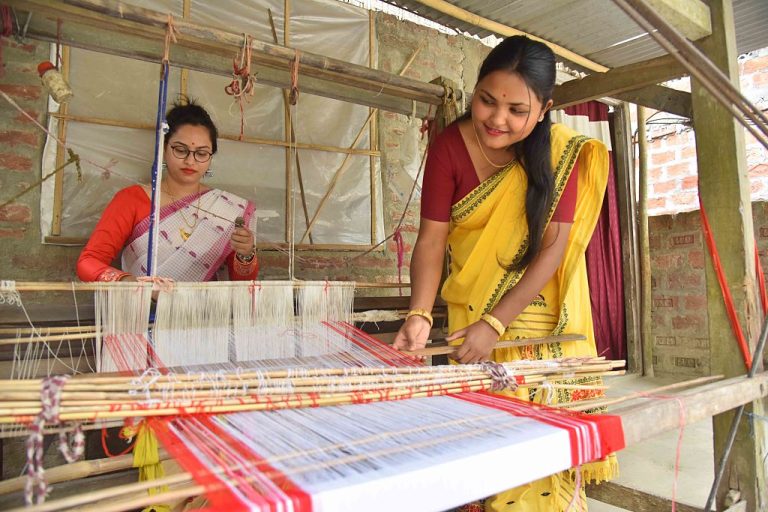79th Independence Day: Handlooms Spin Aatmanirbhar Bharat’s Growth Story Under PM Modi’s Vision

News Analysis: India’s Handloom Sector and Swadeshi Jagran Initiatives
Context:
- Amid global trade tensions, India emphasizes economic self-reliance and the Make-in-India initiative.
- The handloom sector, one of the world’s oldest cottage industries, is a key pillar of Swadeshi Jagran and rural economic empowerment.
- 11th National Handloom Day celebrated on August 7, 2025, with initiatives like Exclusive Handloom Expo and Haat on Wheels in New Delhi.
Key Highlights:
- Economic and Cultural Significance:
- Preserves India’s rich cultural heritage and traditional craftsmanship.
- Provides livelihoods to millions of rural artisans, supporting women’s empowerment and rural economy.
- Government Schemes and Impact (Last 5 Years):
- Beneficiaries: Over 644,985 weavers and 510,320 artisans nationwide.
- Major state impacts:
- Tamil Nadu: ~125,463 weavers, 13,806 artisans
- Uttar Pradesh: 120,818 weavers, 104,054 artisans
- Odisha: 34,538 weavers, 16,210 artisans
- Schemes include:
- National Handloom Development Programme (NHDP)
- Raw Material Supply Scheme
- Comprehensive Handicrafts Cluster Development Scheme
- Weavers’ MUDRA Scheme
- Benefits: Raw materials, upgraded looms, design innovation, marketing support, concessional credit, social security.
- State-Level Initiatives:
- Arunachal Pradesh: Handloom and Handicrafts Policy 2025, empowering tribal weavers.
- Meghalaya: GI tagging of Ryndia and Khasi handloom products, promoting identity and economic value.
- Odisha: EKTA exhibition, textile summit, six textile parks, MoUs worth Rs 7,808 crore, ~53,300 jobs projected.
- Financial Support (Budget 2025):
- NHDP: Rs 200 crore
- Cotton Mission: Rs 600 crore
- Amended Technology Upgradation Fund Scheme: Rs 635 crore
- Research & Capacity Building: Rs 1,948 crore
- Handicraft sector: Rs 260 crore
- Social Security & Welfare:
- Handloom Weavers’ Comprehensive Welfare Scheme: Insurance, scholarships (PMJJBY, PMSBY, MGBBY), education via IGNOU/NIOS.
- Hathkargha Samvardhan Sahayata: Covers 90% of upgraded loom costs.
Significance for UPSC:
- Economic & Rural Development: Handloom sector as a driver of employment, women empowerment, and rural livelihoods.
- Cultural Heritage: Preserving traditional crafts in line with Swadeshi Jagran.
- Policy & Governance: Examples of central-state collaboration, effective scheme implementation, and Make-in-India initiatives.
- Global Relevance: Strengthening India’s brand and competitiveness in traditional textiles.
Updated: August 14, 2025, 12:45 PM
Source: DD News
Handloom Sector Make-in-India Swadeshi Jagran PM Modi National Handloom Day 2025 Handloom Expo Haat on Wheels NHDP Weavers MUDRA Scheme Comprehensive Handicrafts Cluster Development Scheme Raw Material Supply Scheme Rural Employment Women Empowerment Artisan Welfare Textile Industry Odisha Textile Policy Arunachal Pradesh Handloom Policy Meghalaya GI Tag Budget 2025 Handloom Indian Handloom Heritage Rural Economy UPSC Current Affairs BPSC Current Affairs MPPSC Current Affairs UPPSC Current Affairs SSC CGL State PSC Cultural Preservation Economic Self-Reliance Viksit Bharat Aatmanirbhar Bharat